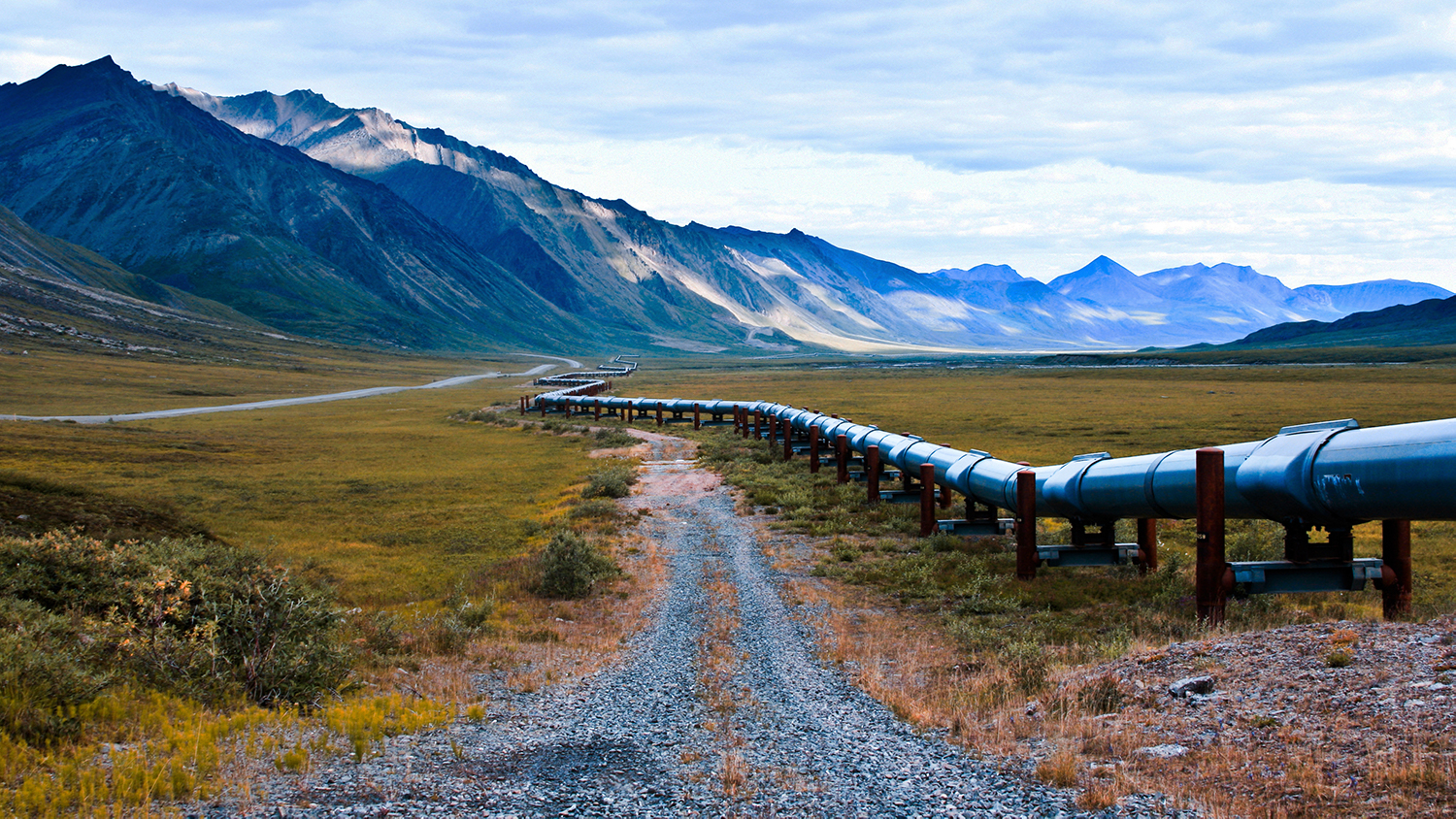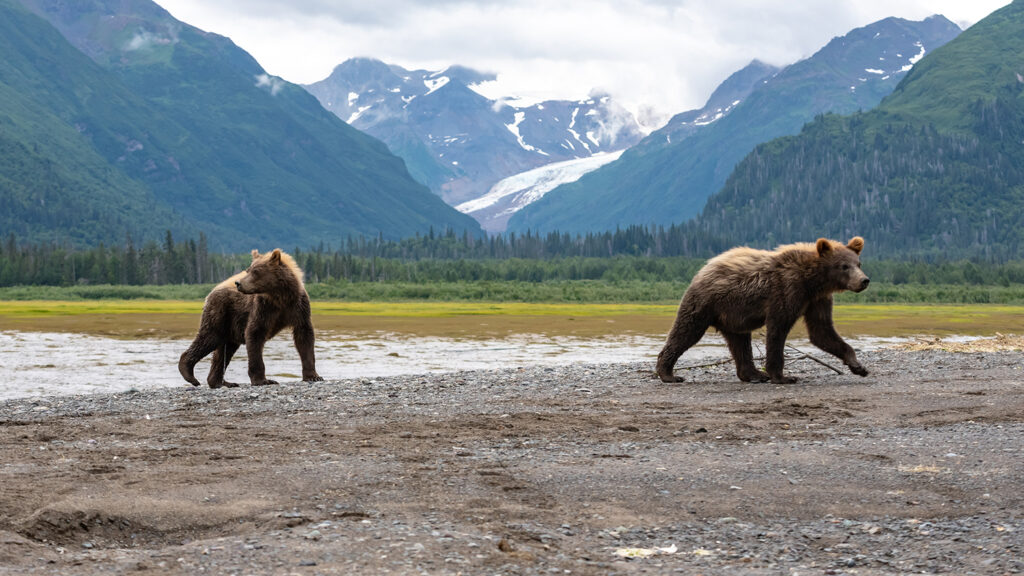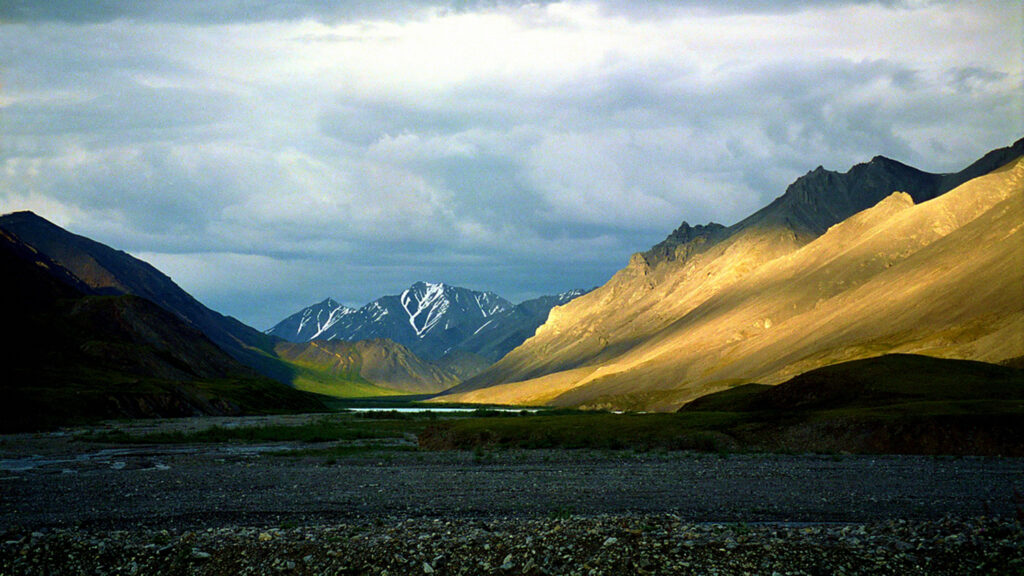How Oil and Gas Drilling Could Disrupt the Arctic National Wildlife Refuge

Encompassing more than 19 million acres of snow-capped mountains and coastal tundra in northeastern Alaska, the Arctic National Wildlife Refuge is one of the largest unspoiled and intact ecosystems left on the planet. But the U.S. Department of the Interior has approved a plan to auction off leases for oil and gas development in the refuge, a move that could negatively impact wildlife and tourism.
The plan would open up the refuge’s coastal plain — a patch of 1.56 million acres along the coast of the Beaufort Sea — to drilling. Interior Secretary David Bernhardt estimated that operations could begin in roughly eight years and last for about half a century.
Democrats, native tribes in the area and environmental groups have long opposed the government’s plan to open the refuge to oil and gas drilling, arguing that it will not only cause an increase in greenhouse gas emissions but also lead to spills and fragment important wildlife habitat.
“No energy production comes free of environmental costs,” said Christopher Moorman, professor and interim associate head in the Department of Forestry and Environmental Resources at NC State’s College of Natural Resources.
Moorman, whose areas of expertise include wildlife habitat management and renewable energy ecology, added that the infrastructure needed to extract and transport oil and gas (well pads, pipelines, roads, coastal ports, etc.) could lead to habitat loss and fragmentation.

As part of its plan to open the Arctic National Wildlife Refuge to drilling, the Interior Department will construct as many as four airstrips and major well pads, 175 miles of roads, vertical supports for pipelines, a seawater treatment plant and a barge landing and storage site.
The construction of this infrastructure — and the drilling itself — could also cause wildlife to exhibit avoidance behaviors, especially if human activity is high, according to Moorman.
“Where humans, equipment, and vehicles are abundant and active, the noise or other disturbances may deter animals from what otherwise may be habitat immediately around the infrastructure,” he said.
The Arctic National Wildlife Refuge, which was established in 1980 by Congress, provides habitat for a wide variety of animals, including 45 species of land and marine mammals, 36 species of fish, and more than 200 species of birds that come from six continents to breed, rest or feed from April to July. The refuge’s coastal plain — stretching north from the Brooks Range to the Arctic Ocean — is home to endangered polar bears and is the calving ground of the Porcupine caribou herd.
Moorman said wild, undeveloped places such as the refuge are increasingly rare in the United States and the rest of the world. While strategies can be employed to mitigate or minimize the effects on wildlife, it is often difficult or impossible to reverse course once development occurs.

In addition to its impacts on wildlife, oil and gas drilling within the refuge could also lead to a decrease in tourism, according to Jonathan Casper, associate professor in the Department of Parks, Recreation and Tourism Management.
A survey by Casper and other researchers, published in the Journal of Outdoor Recreation and Tourism in 2017, examined the impacts of hydraulic fracturing on park usage. Hydraulic fracturing, also known as “fracking,” is a drilling technique designed to recover oil or natural gas from deep in the Earth.
Park users who participated in the survey expressed concern that fracking operations would hinder their ability to access parks and enjoy recreational activities, according to Casper. There is also evidence to suggest that park users would avoid parks near fracking operations, with more than half of all survey participants responding that they were willing to travel further to visit parks unaffected by fracking.
“In general, park users believed that fracking on public land was unnecessary and bad for the environment,” Casper said. “Many even felt that fracking should be banned on public land.”
The Arctic National Wildlife Refuge offers a variety of outdoor activities, with at least 1,200 people visiting the refuge each year to enjoy wildlife viewing and photography, backpacking, camping, rafting, hunting and fishing.
Casper said the extent to which oil and gas drilling impacts tourism at the Arctic National Wildlife Refuge will depend on how the associated noise and traffic alter the visitor experience.
“If you think about why people travel to these wild places, it’s because they are quiet and untouched,” he added. “Our study clearly shows that people avoid areas near fracking.”
This post was originally published in College of Natural Resources News.
- Categories: